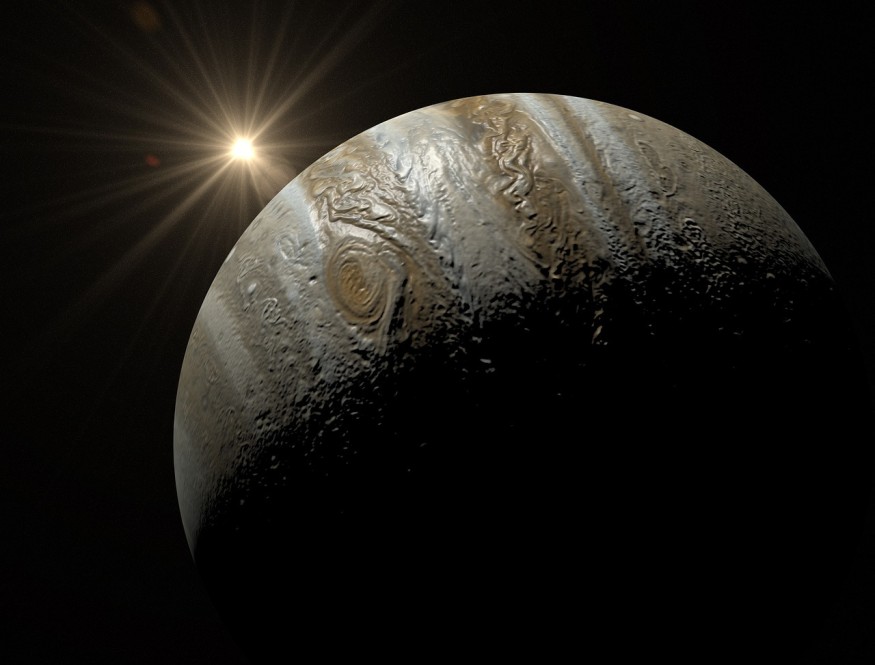Jupiter, often dubbed a cosmic vacuum cleaner due to its massive size, attracts various objects into its orbit, occasionally flinging some towards Earth.
Recent observations have revealed asteroids and comets, both large and small, colliding with Jupiter's swirling atmosphere. This includes an incident in August where an object several dozen meters wide exploded within Jupiter's clouds. Recently, an amateur astronomer captured another such impact in a stunning video.

Space Rock Attracted Attracted to Jupiter's Gravity
Collisions have been a fundamental aspect of the solar system's formation, contributing to the creation of planets through the clumping together of objects billions of years ago.
On November 15, a brief yet conspicuous flash on Jupiter, signaling a collision, was spotted by a Japanese amateur astronomer. Heidi B. Hammel, a planetary astronomer, shared the discovery on the social media platform X (formerly Twitter), noting it as another impact event on Jupiter.
There was another impact on Jupiter last night! The bright flash is a bolide - a shooting star in the atmosphere of Jupiter. Too small to leave an impact site like we saw in 1994 and 2009. https://t.co/8JRPBqA0gm
— Dr Heidi B. Hammel (@hbhammel) November 16, 2023
Unlike larger impacts observed in 1994 and 2009, this recent incident involved a bolide, essentially a shooting star within Jupiter's atmosphere, deemed too small to leave a discernible impact site.
Hammel referenced past impacts involving more substantial objects, such as Comet Shoemaker-Levy 9 in 1994, which left dark marks on Jupiter's surface, including one comparable to Earth's diameter.
The recent, smaller impact involved an object, possibly fragments of a comet or asteroid, colliding with molecules in Jupiter's atmosphere, resulting in rapid friction, heating, and eventual explosion, resembling a fiery display. Astronomer Peter Vereš previously described a similar Jovian impact event as akin to a "fireball."
READ ALSO : Why Does Jupiter Blink? Experts Answer 4-Decade Mystery of the Gas Giant's Chronic X-Ray Aurora Flares
Earth's Dynamic Dance with Bolides and Asteroids
Every day, Earth encounters objects on a smaller scale, with around 100 tons of dust and sand-sized particles entering the atmosphere and burning up.
NASA notes that annually, an asteroid roughly the size of a car plunges through the sky, creating a spectacle as it explodes. Impacts from larger objects, approximately 460 feet in diameter, occur every 10,000 to 20,000 years, and catastrophic events, like the one responsible for the extinction of dinosaurs, take place on timescales spanning 100 million years.
Similar to Jupiter, Earth experiences the presence of bolides, commonly known as fireballs. These intensely bright celestial bodies make their way into Earth's atmosphere each year, burning out rapidly. Often, they traverse expansive oceanic regions, making them challenging to observe from the ground.
While the recent fireball likely had no significant effect on Jupiter, previous collisions have left lasting impressions. Hammel views the impact as a crucial moment in understanding Earth-asteroid dynamics, underscoring the importance of monitoring our celestial surroundings to anticipate potential impacts.
Despite bolides not posing major threats to Earth, the success of NASA's DART test last year signifies notable progress in asteroid defense systems. Nevertheless, the recent fireball serves as a reminder that the cosmic frontier can occasionally resemble a tumultuous game of cosmic bumper cars.
RELATED ARTICLE : Comet Strikes on Jupiter's Europa Could Have Delivered Ingredients for Its Hidden Ocean, Study Reveals
Check out more news and information on Space in Science Times.
© 2025 ScienceTimes.com All rights reserved. Do not reproduce without permission. The window to the world of Science Times.











